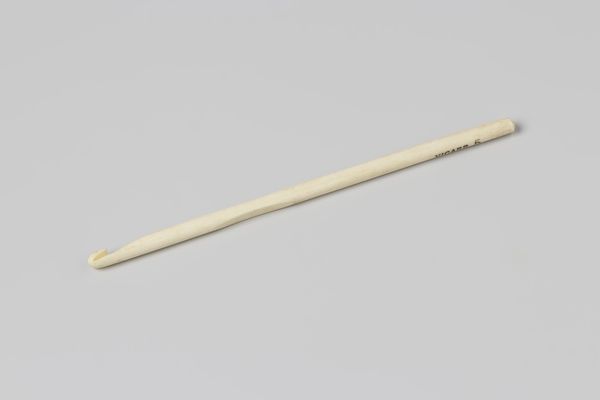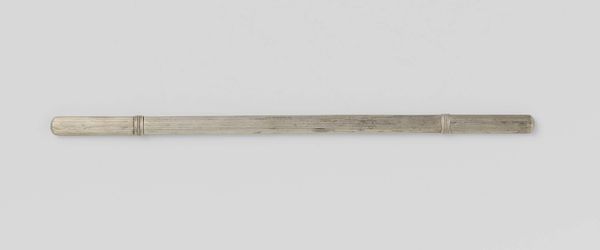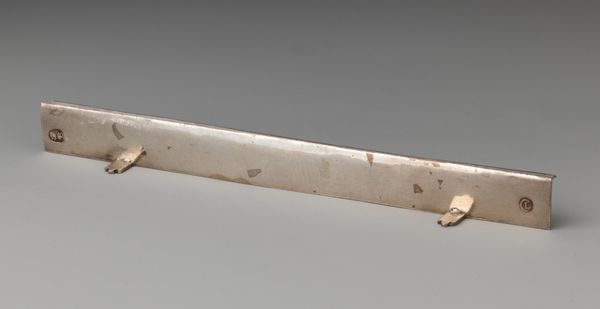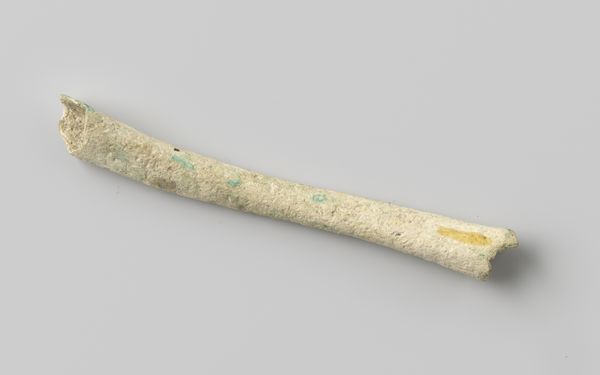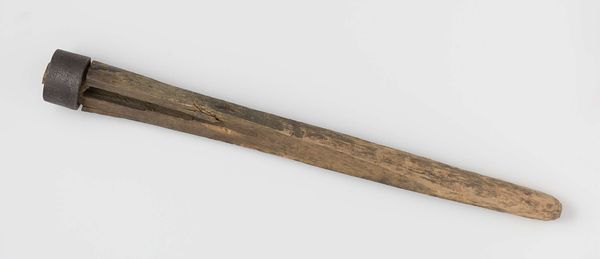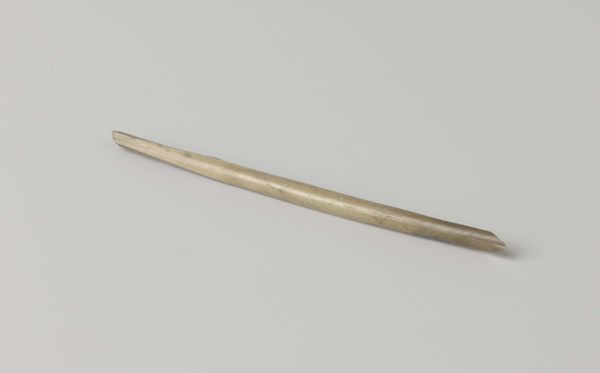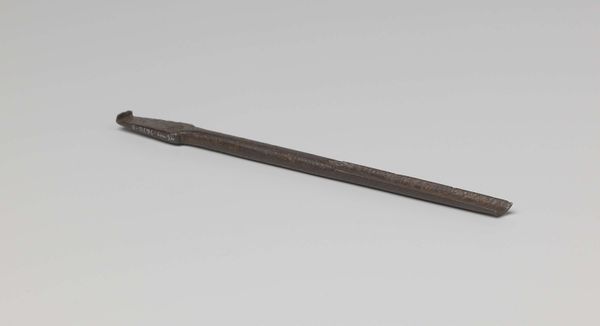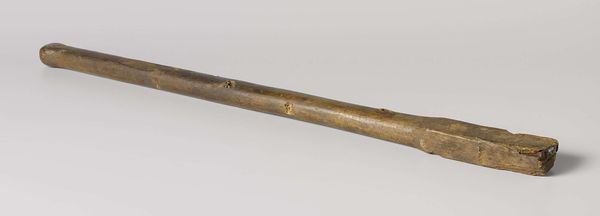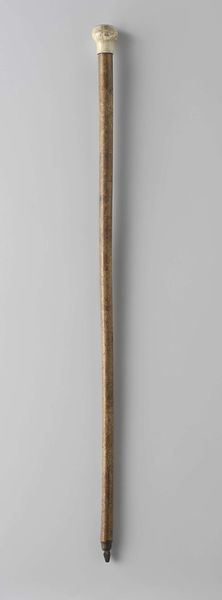
Commander’s baton of the Dutch Governor of the Gold Coast c. 17th century
0:00
0:00
anonymous
Rijksmuseum
brass, gold, sculpture, ivory
#
brass
#
dutch-golden-age
#
gold
#
sculpture
#
islamic-art
#
decorative-art
#
ivory
Dimensions: height 37.2 cm, diameter 3.8 cm, length 37 cm
Copyright: Rijks Museum: Open Domain
Editor: This is the Commander’s baton of the Dutch Governor of the Gold Coast, made around the 17th century. It combines ivory with gold and brass fittings. It feels deceptively simple for an object representing authority. What speaks to you most about this piece? Curator: Its very materiality screams of exploitation and power. Ivory, sourced through brutal means in Africa, is fashioned into a symbol *of* Dutch power *over* that very coast. Note the smooth, worked ivory against the glint of the gold – a stark contrast. The cost and source of materials were very important during the Dutch golden age as were visual reminders of the Dutch power, what about this artwork says colonialism to you? Editor: I hadn't considered the specific origins of the ivory so explicitly. It highlights the social context and the raw materials' journey. How would you connect the object to labor and consumption of this era? Curator: Precisely. The baton embodies both. Consider the labor involved: the extraction of the ivory, likely forced labor, the mining and smelting of the gold and brass, and the craftsmanship required to assemble them. The consumption is more symbolic: it is a display of wealth and dominance, literally consumed through visual experience, reinforcing the colony's submissive role. Do you see this consumption playing into the status of its commissioner as well? Editor: I do now. It’s less about pure aesthetics and more about what the object *does,* what it represents in terms of production and human cost, far beyond its decorative purpose. I'll definitely look at colonial art differently moving forward! Curator: Agreed, this baton, while visually unassuming, encapsulates the grim realities of colonial material culture. A valuable insight, indeed.
Comments
rijksmuseum about 2 years ago
⋮
The running of the Dutch West India Company in West Africa was in the hands of the director-general in Fort Elmina. The commander’s baton lay before him on the table when he assembled his Kleine Raad (Small Council). The gold mounts on the ivory baton bear the monogram, GWC, of the Chartered West India Company.
Join the conversation
Join millions of artists and users on Artera today and experience the ultimate creative platform.
